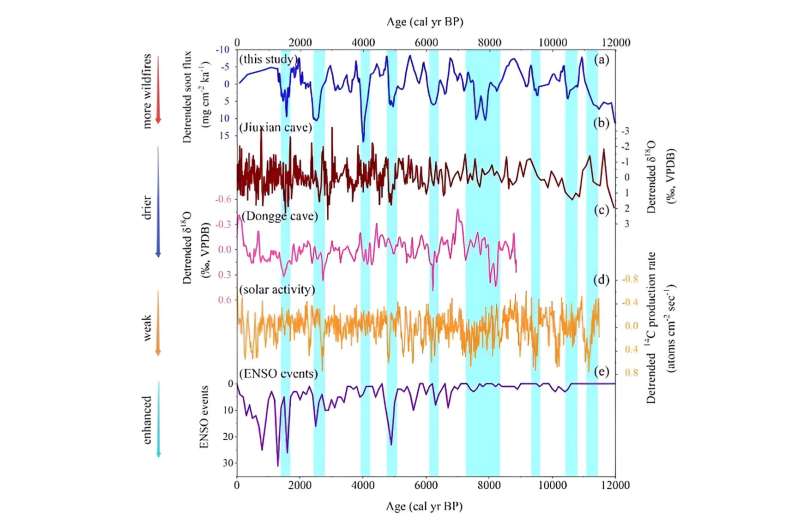This article has been reviewed according to Science X's editorial process and policies. Editors have highlighted the following attributes while ensuring the content's credibility:
fact-checked
peer-reviewed publication
trusted source
proofread
Researchers reveal linkage between wildfire activity and abrupt climate events during the Holocene

As a major Earth system component, wildfire plays an important role in the Earth's terrestrial ecosystems and climate system, with significant impacts on the atmosphere, radiation effects, vegetation, surface properties, global biogeochemical cycles and human survival. Understanding the interactions among wildfires, climate change, vegetation, and human activities over geologic time is a viable approach to making accurate projections of future wildfire occurrences, which is crucial for human adaptation to possible wildfire threats.
A research group led by Prof. Han Yongming from the Institute of Earth Environment of the Chinese Academy of Sciences reconstructed a high-resolution wildfire history of the monsoon marginal zone in the Holocene by using soot records from Qinghai Lake sediments, to explore the relationship between wildfire and its possible driving factors.
They found that on the sub-orbital timescale, fewer wildfires occurred during the early-middle Holocene under humid climate. With the weakened monsoon and increased aridification during the mid- to late Holocene, wildfires increased and remained at high levels since 3.0 cal ka before present.
On a millennial timescale, there were extremely severe wildfire periods that were centered around ca. 1.6, 2.5, 4.1, 4.9, 6.3, 7.8, 9.6, 10.5 and 11.4 cal ka before present, respectively, which were strongly correlated with millennial timescale abrupt weak monsoon events.
By comparing the soot records, climate proxies and possible driving factors, they also found that on both suborbital and millennial timescales, drought climate associated with a weakened monsoon, which was likely modulated by solar radiation (activity), may be the major factor driving the rapid increase in wildfires in the Holocene.
In general, temperature is thought to drive wildfire activity, with high temperatures being favorable for wildfire occurrence. However, this work suggests that the rapid increase in wildfires is closely related to abrupt dry/cold climate events on a millennial timescale.
This work, published in Quaternary Science Reviews, may provide a new insight for fire prediction, especially for those extreme wildfires that often feed back to abrupt coal/dry climate events in monsoon-dominated regions.
More information: Yifei Hao et al, Holocene wildfire on the Qinghai-Tibetan Plateau–witness of abrupt millennial timescale climate events, Quaternary Science Reviews (2023). DOI: 10.1016/j.quascirev.2023.108373
Journal information: Quaternary Science Reviews
Provided by Chinese Academy of Sciences




















